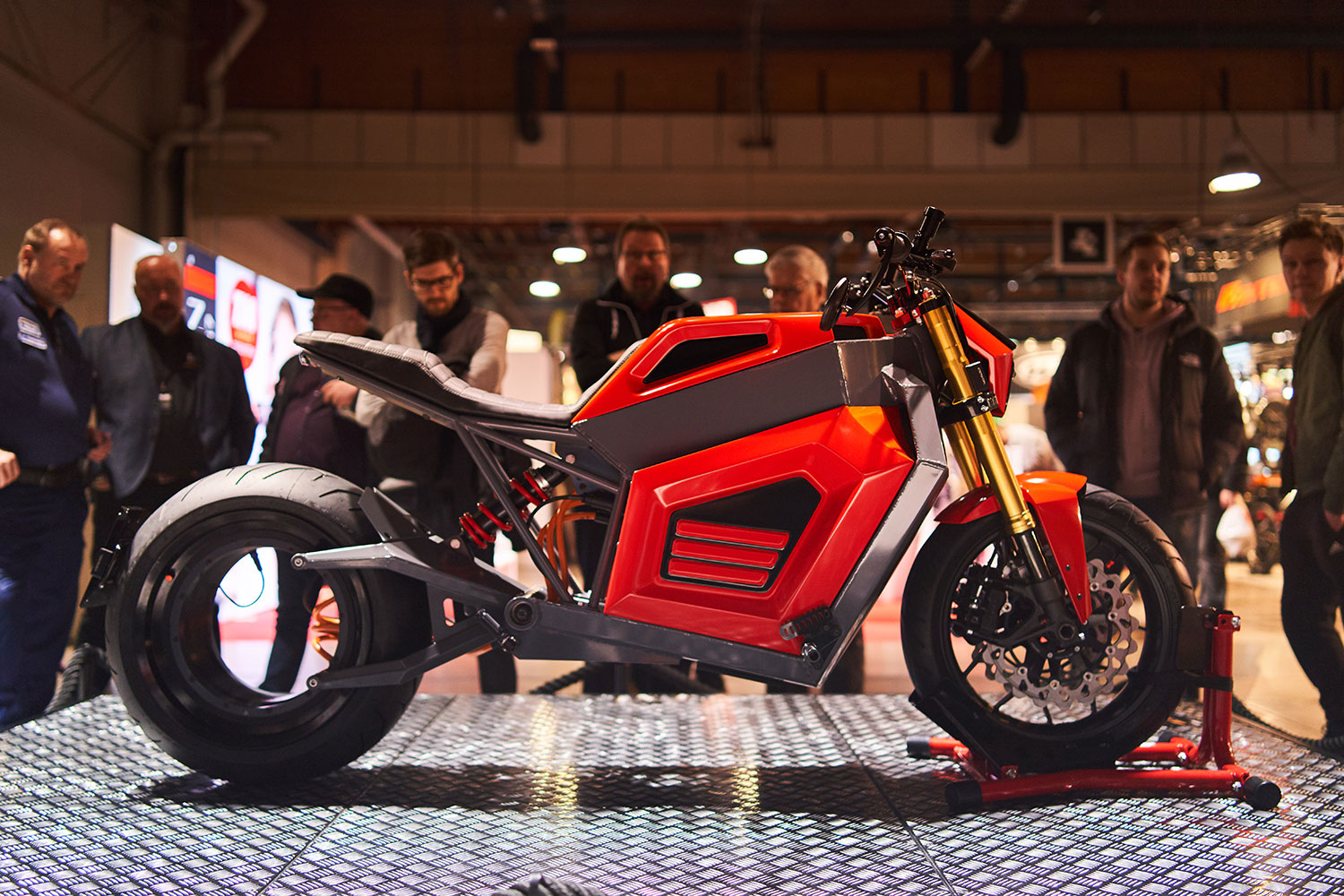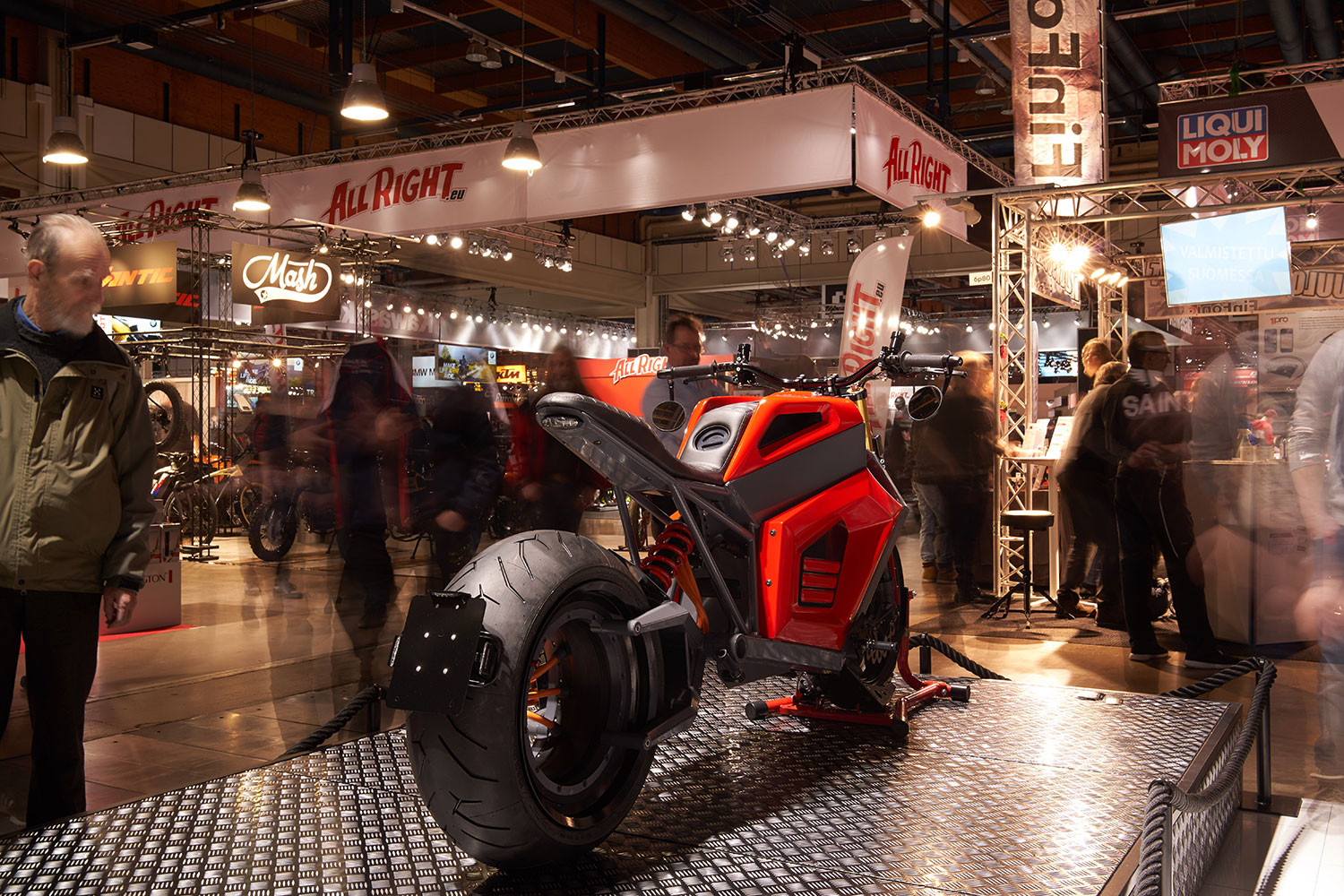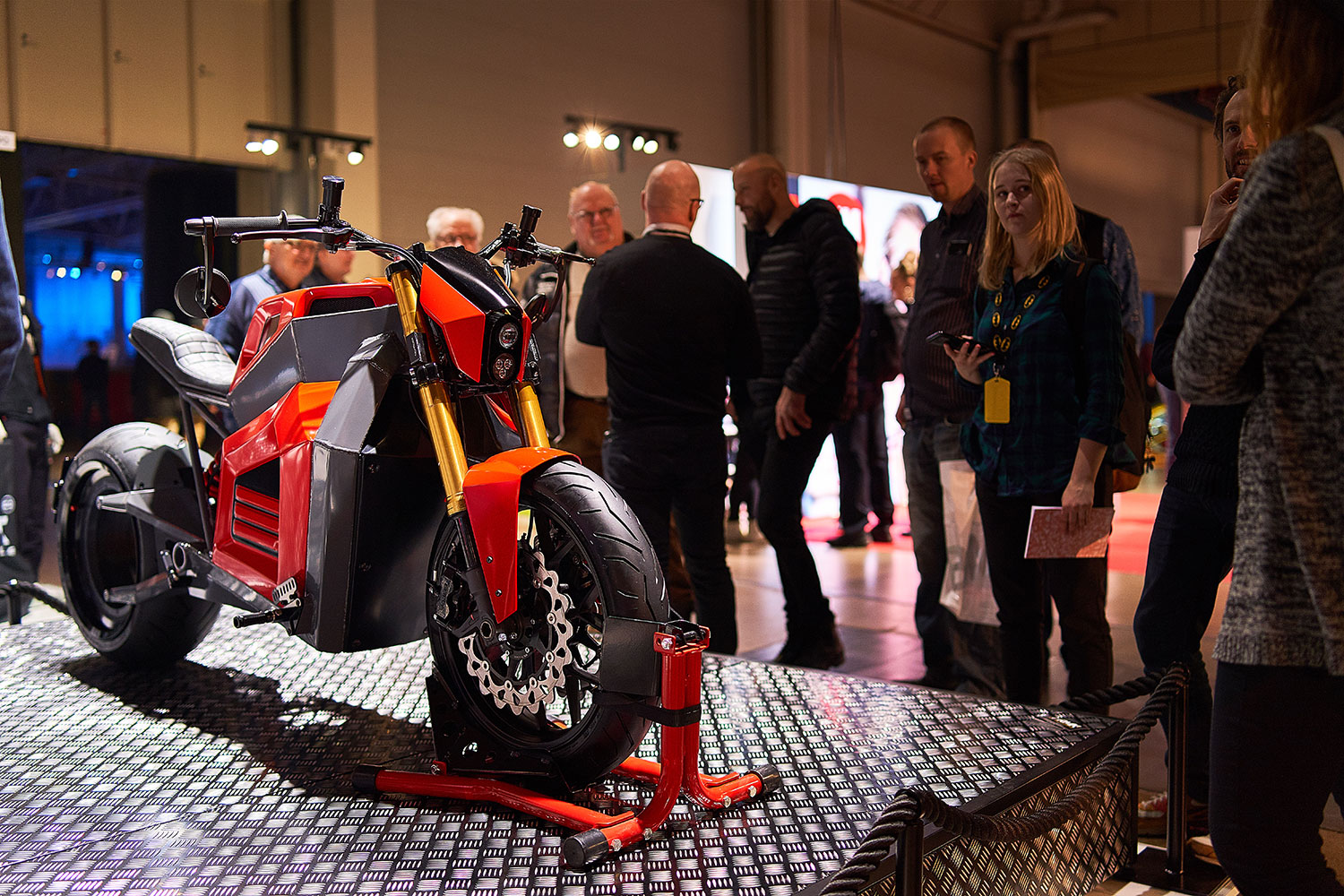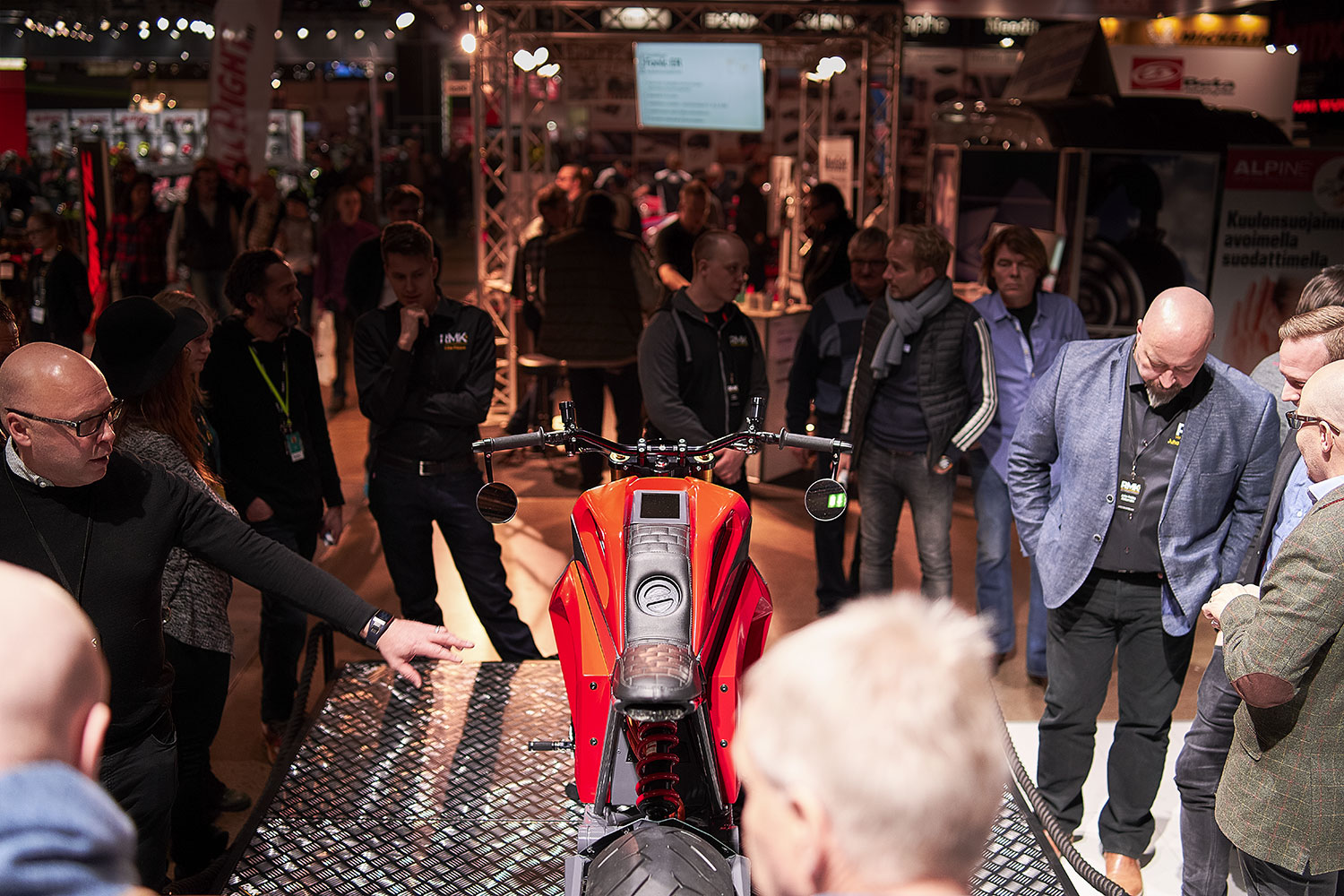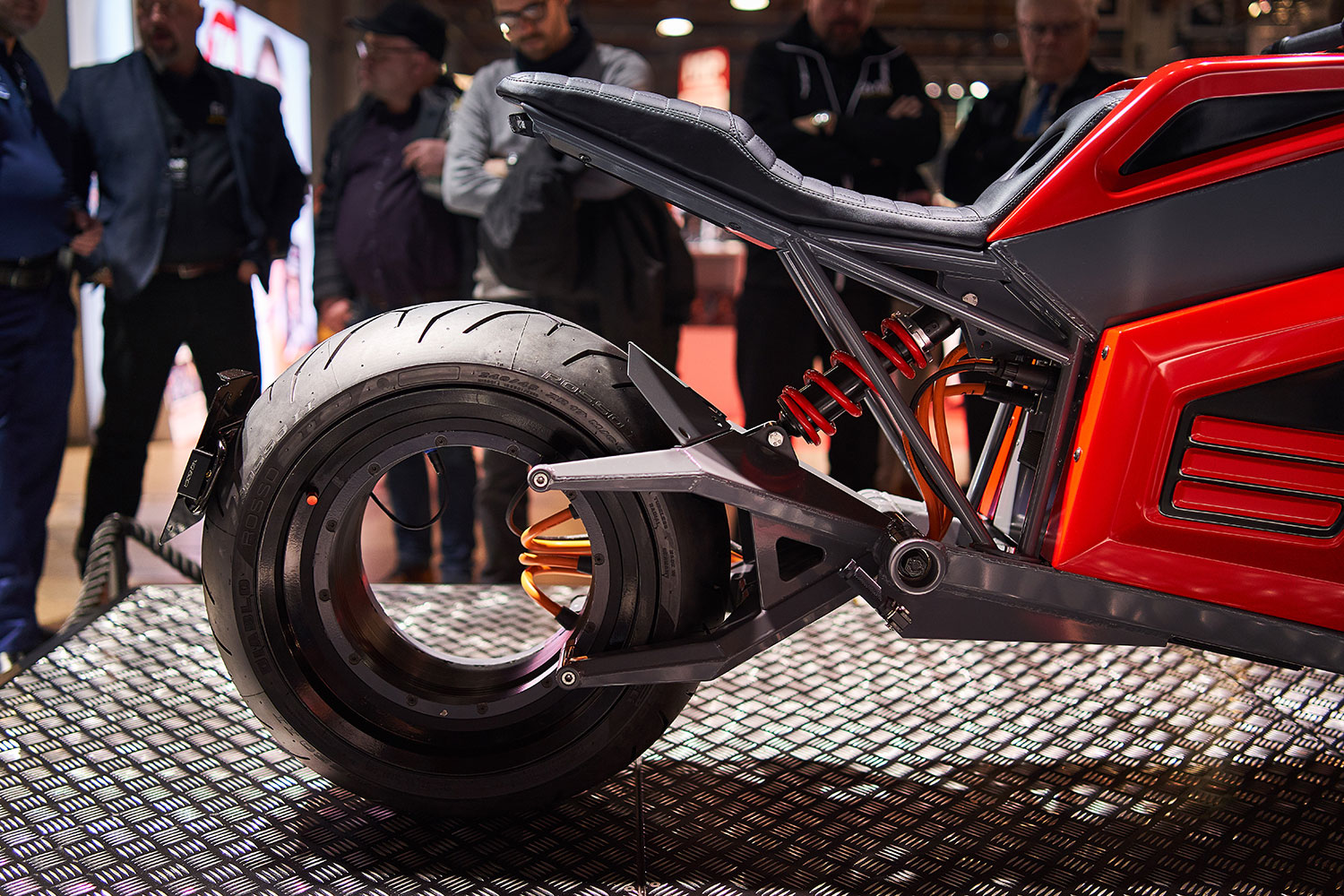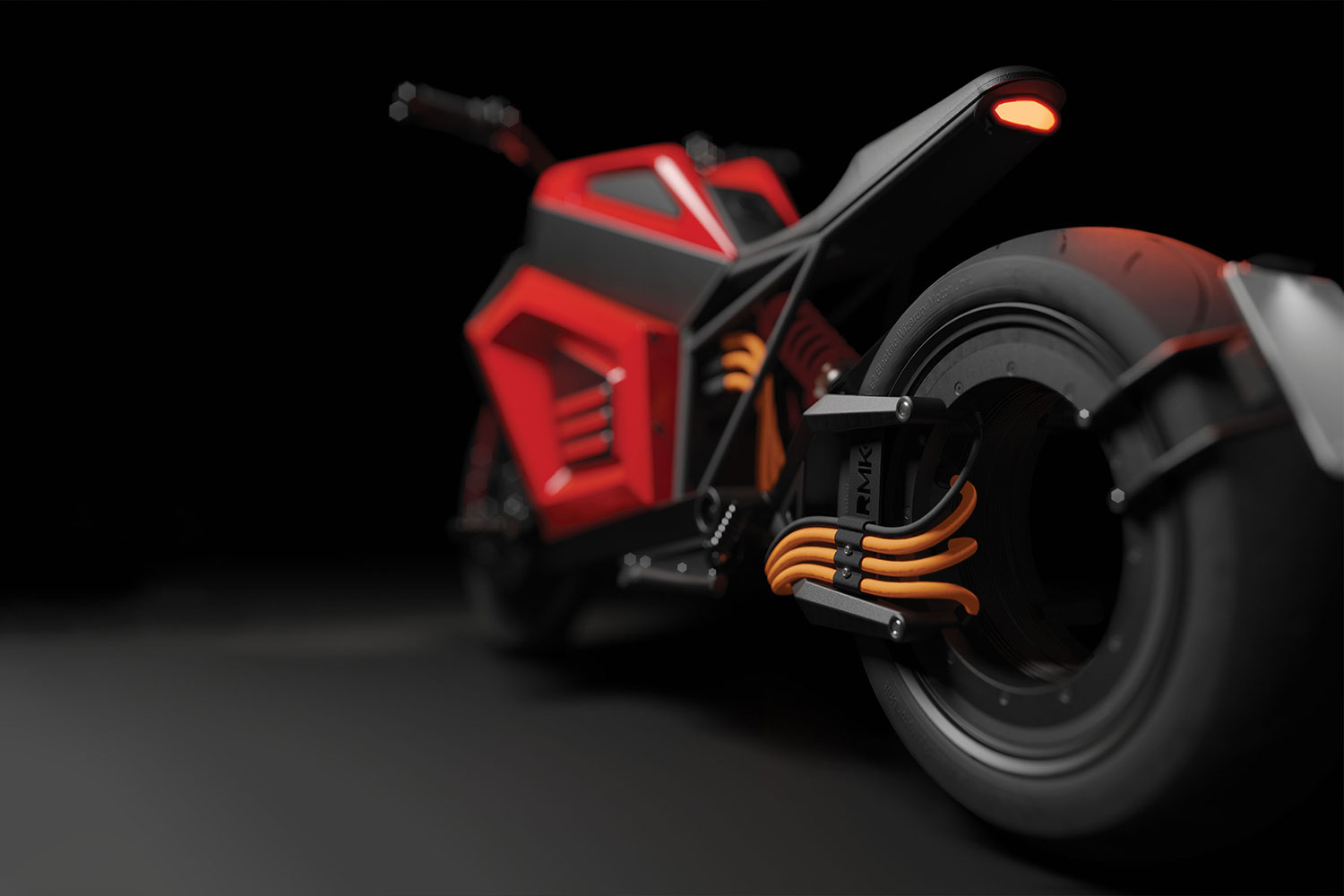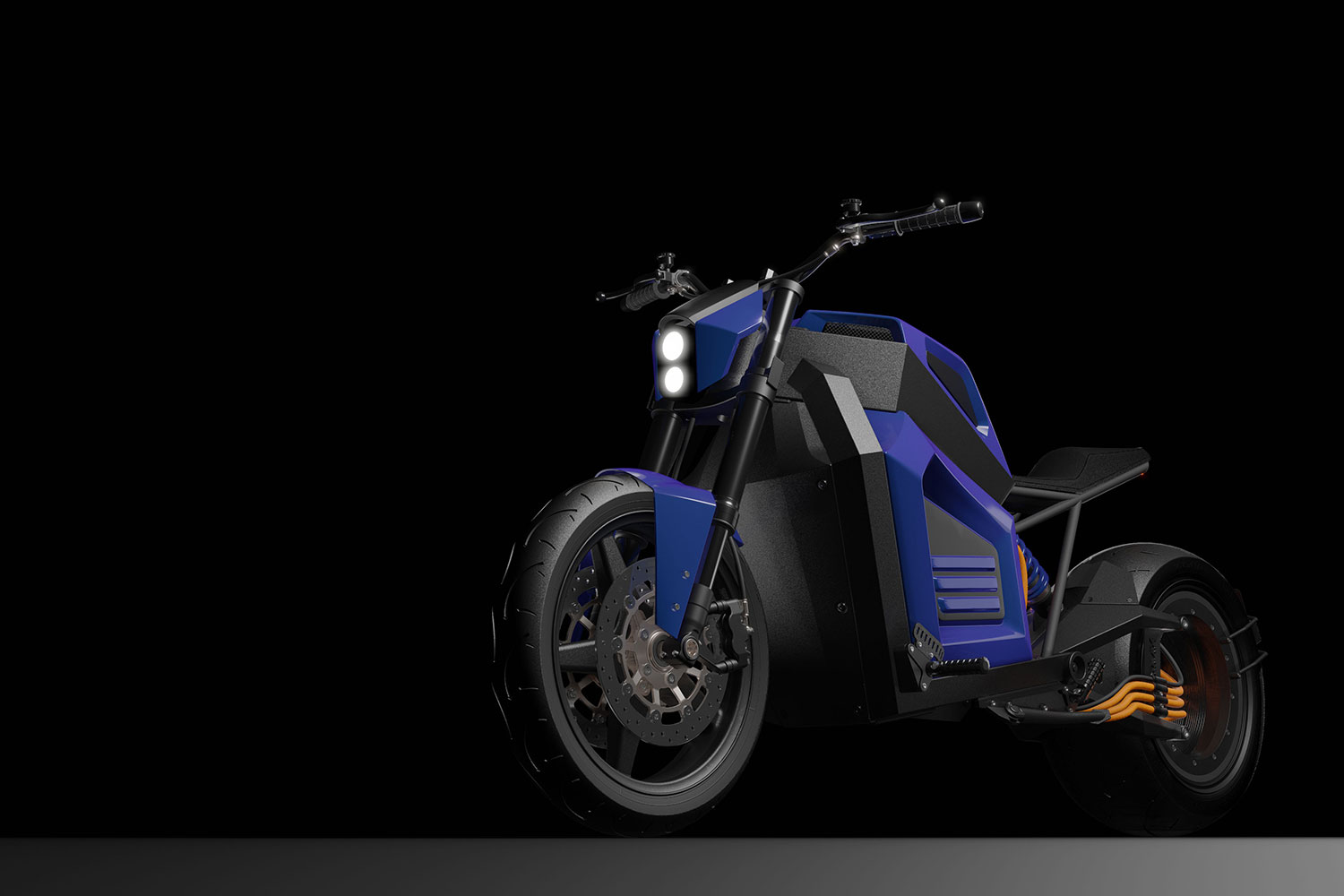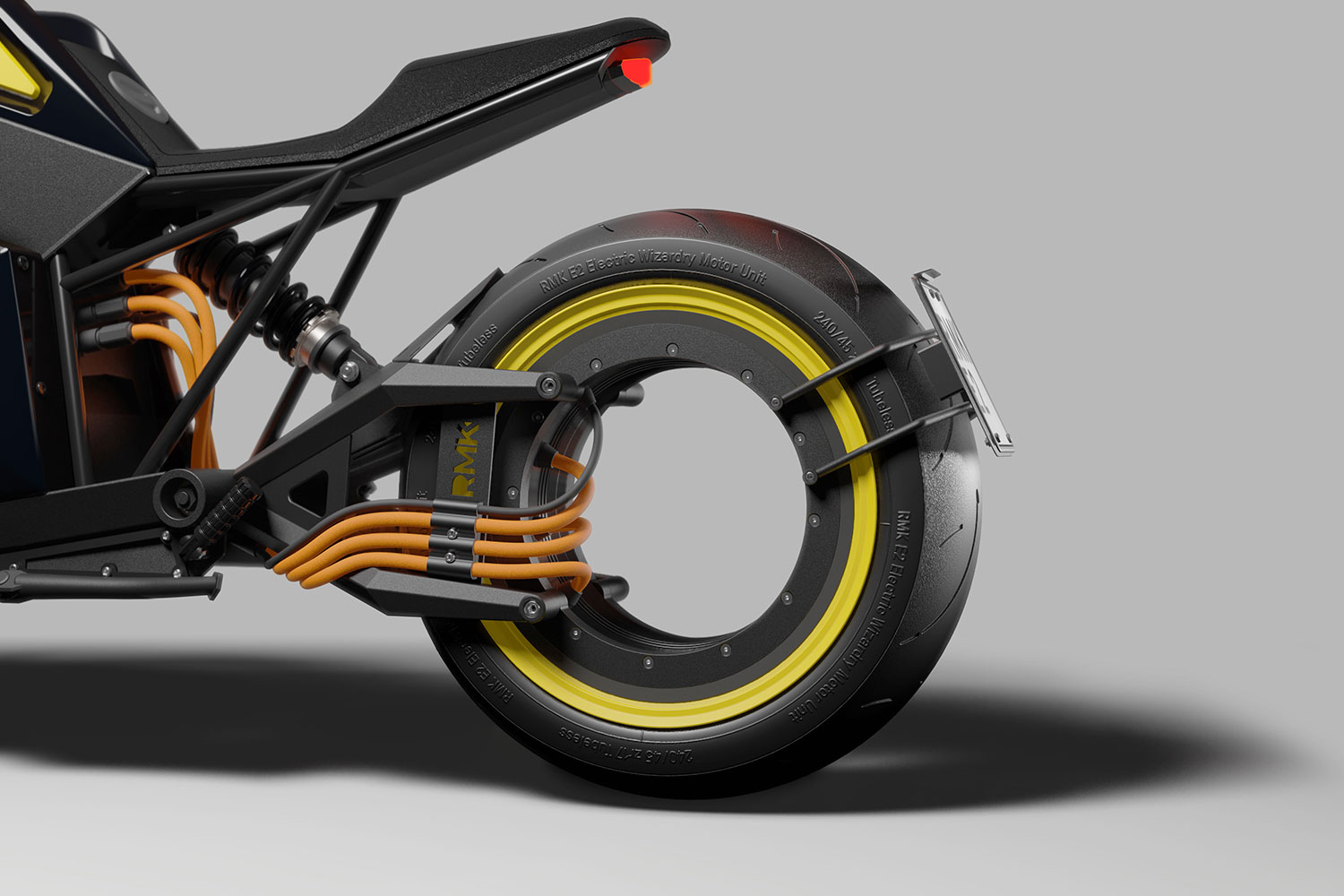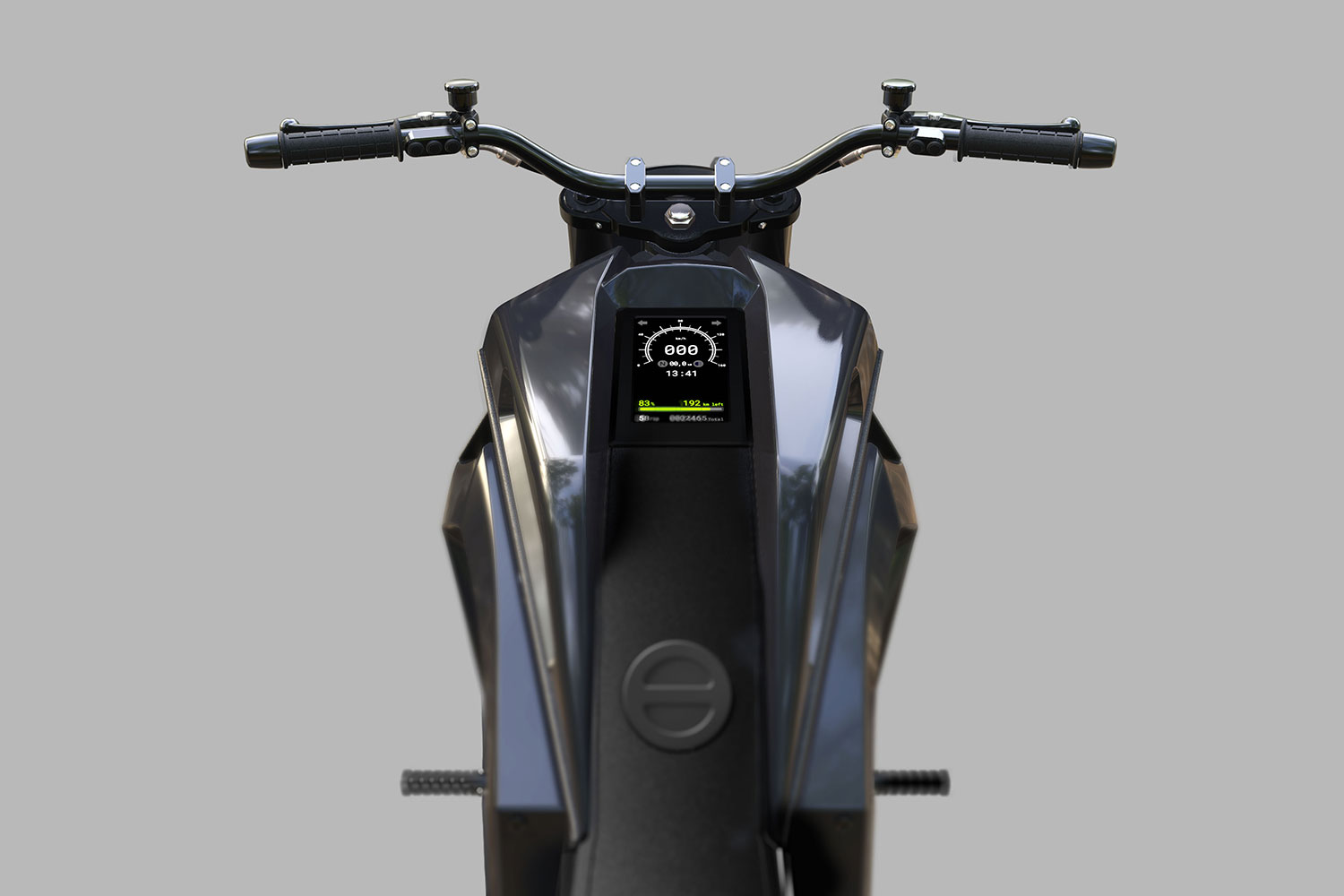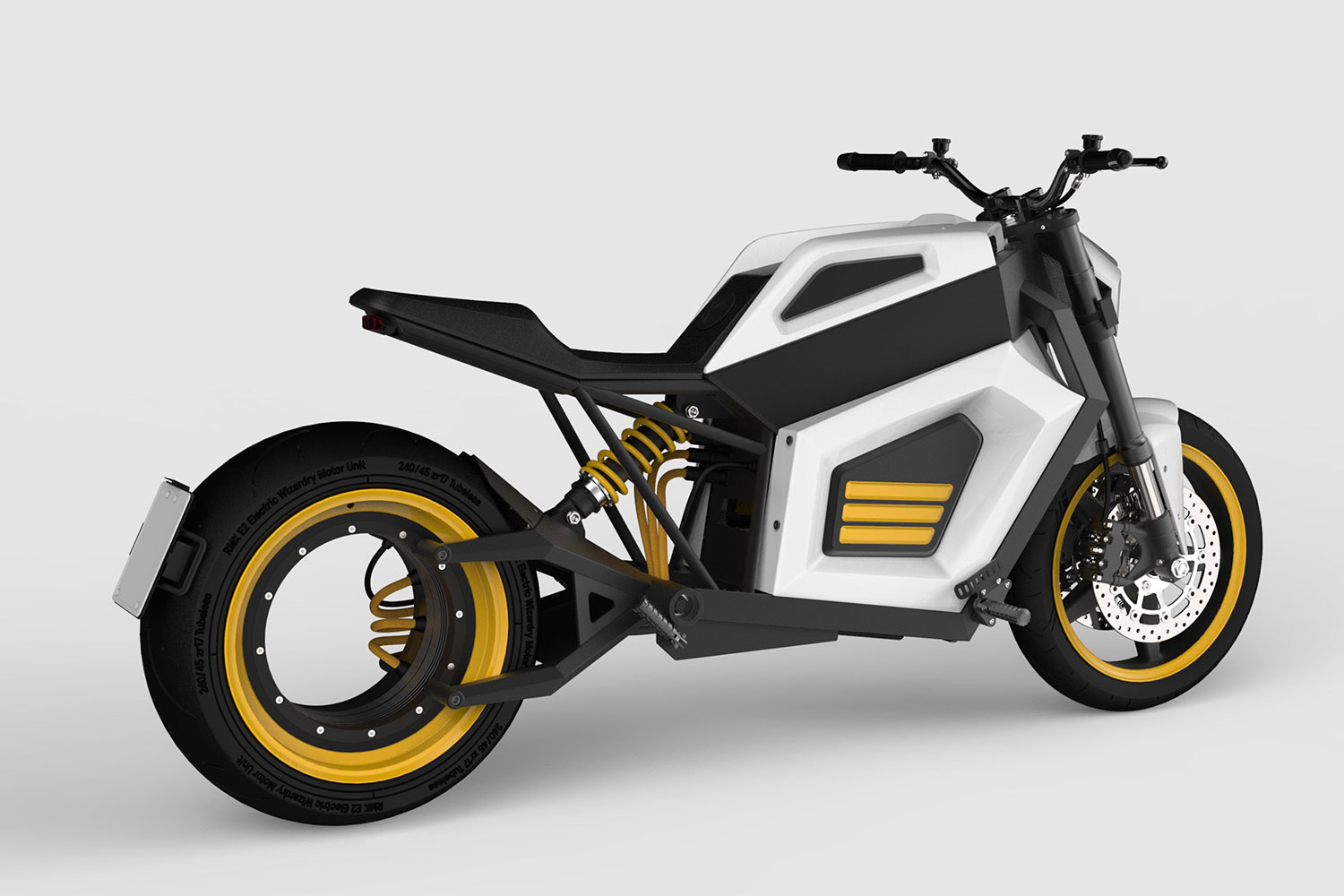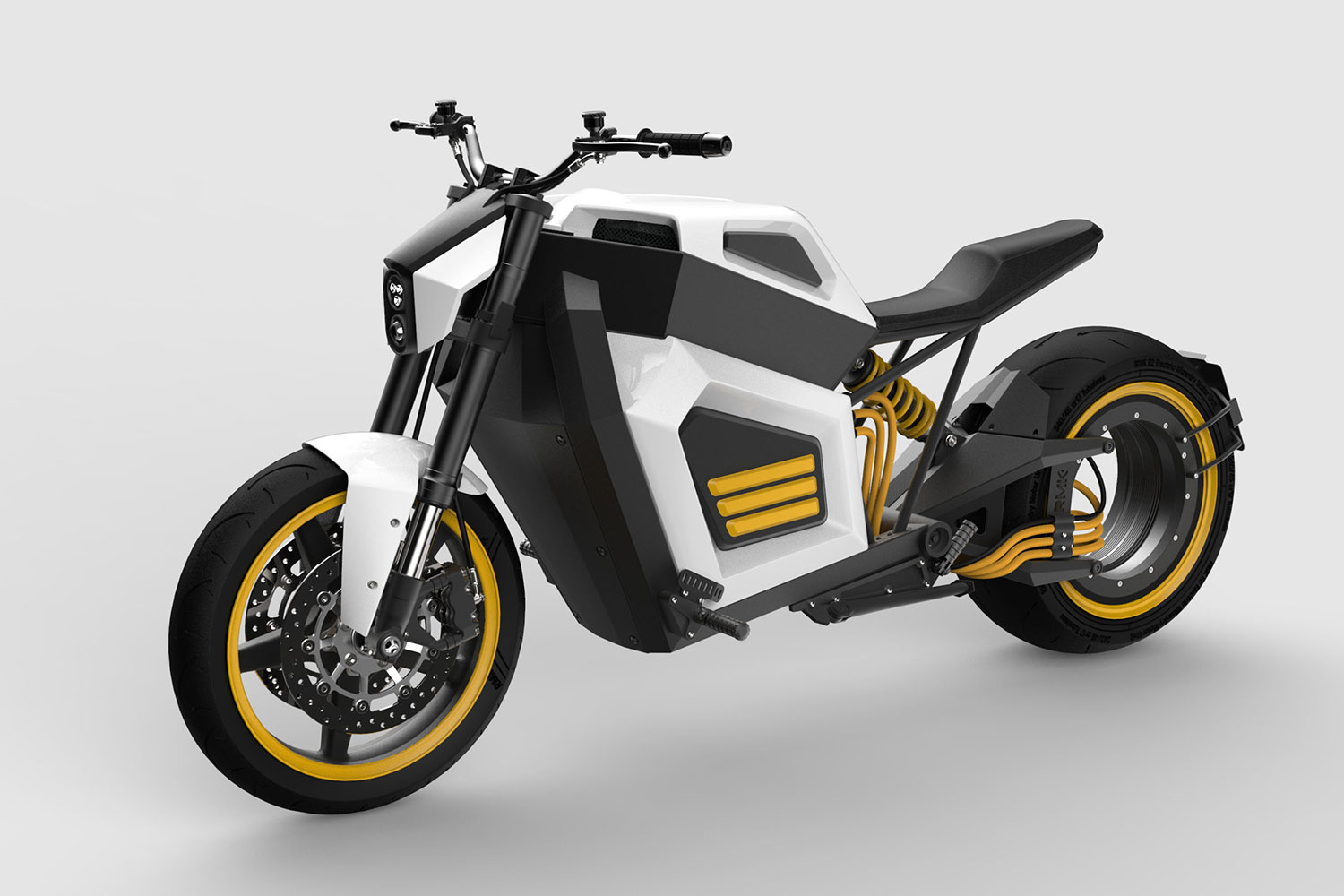Finland, a land of conservancy. Conservation of the environment. Of words and actions. Of design and aesthetics. It is the land of “keep it simple, stupid.”
It’s also the land that has produced more world racing titles than any other country on Earth. Though they keep it simple, they also keep it simple fast. As such, it’s easy to understand the thought process behind the Finnish-built RMK E2 electric motorcycle. Simple design? Check. Fast? Oh, hell yeah.
The debut of the RMK E2 recently took place at the MP 19 Motorcycle show in Helsinki, Finland. The first thing you notice is the design and engineering of the motorcycle. Said to be powered by a 50kW battery pack, capable of producing 67 horsepower and a staggering 235lb-ft of torque (good luck keeping that front wheel planted), the E2 gets rid of the standard chain-driven rear wheel for a hub-driven unit. Aside from the swing-arm that connects the hub to the chassis of the E2, the only thing that goes to the rear wheel is a set of three heavy-duty cables that transfer the motorcycle’s electricity to the ground.
As the E2 doesn’t need a clutch, the right lever brakes the front brake while the left lever brakes an electrical rear brake and has been redesigned to give the rider a regenerative brake to help reduce the amount of energy the motor sucks up.
The company has also stated that even with the innovative rear hub motor design, changing a tire won’t require any specialty tools or procedures. The company asserts that this is just like a conventional motorcycle, just with a little science fiction flair and enough torque to possibly restart the heart of a dying star.
RMK hasn’t yet released full details for the E2 just yet, but the company has stated that their goal is to give the E2 a range of about 186 miles per charge and to have a charge time to 80 percent full in just two hours.
As for price, the company hasn’t divulged a final number, only that it’s targeting a starting sum of $28,500, which would pit RMK’s E2 right against Harley-Davidson’s LiveWire, which is set to start production later this year. Personally, each seems entirely too pricey for the market, but both seem to illustrate an electric motorcycle future is coming sooner than most believed.
